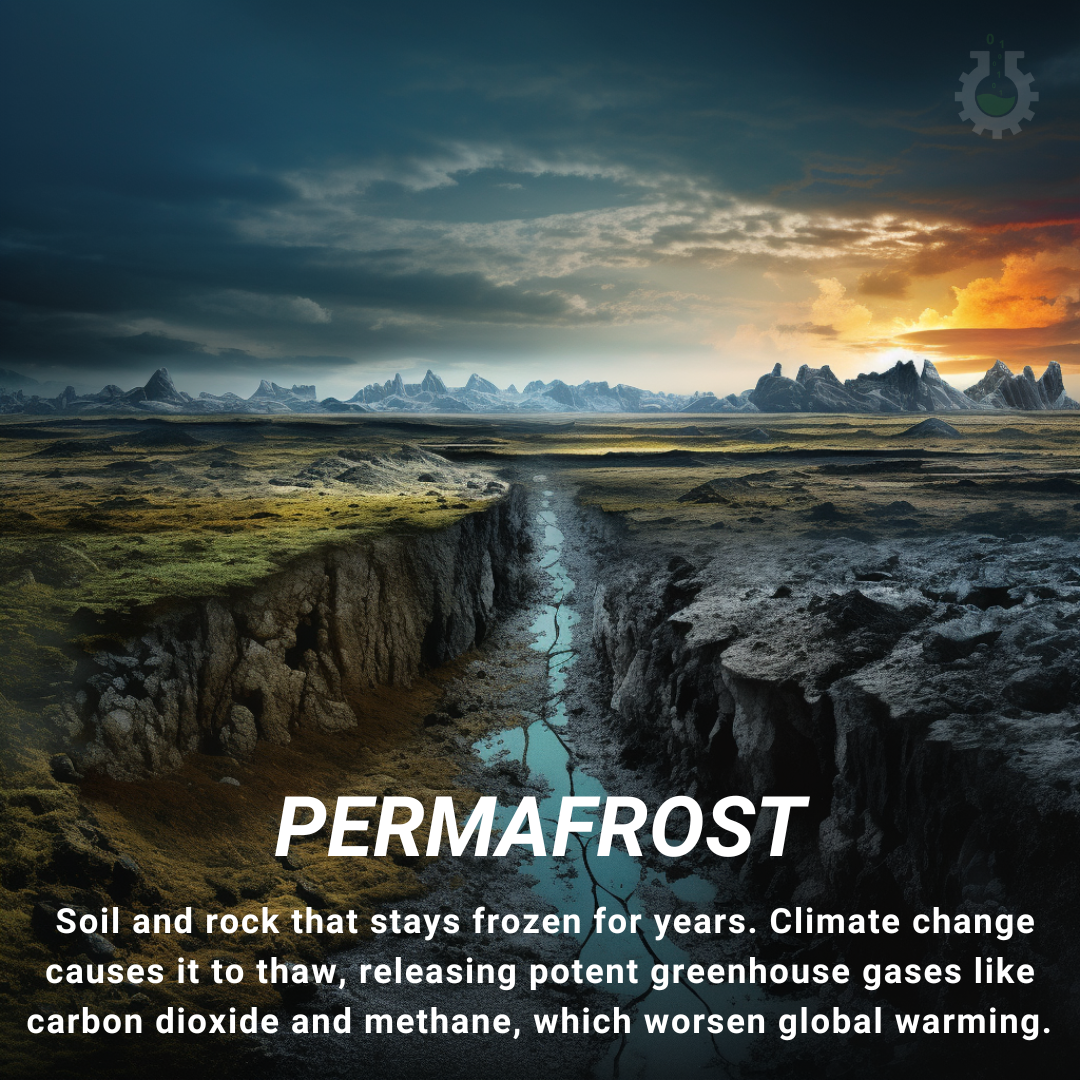September 11, 2023
Climate Change Poster Collection of the Day – Permafrost
Book a Demo
Today’s Climate Change Poster Collection features Permafrost, a term that refers to a layer of soil or rock that has remained frozen for several years, typically found in the Arctic and Antarctic regions. This frozen layer can vary in thickness, ranging from less than a meter to over 1,500 meters. Its formation is influenced by several factors including the climate, the nature of the ground, and the heat exchange between the Earth’s surface and the atmosphere.
However, it is crucial to understand that changes in this frozen stratum can have significant environmental impacts. Such alterations can drastically affect local ecosystems, infrastructure, and contribute to climate change through the release of methane. This has been a growing concern for environmentalists and scientists globally, and it has caught the attention of the United Nations.
UN Secretary-General, António Guterres, has been vocal about the steps needed to mitigate the impact of climate change. He has called for an end to building new coal power plants due to their negative impact on climate change. Coal power plants are one of the largest contributors to greenhouse gas emissions, which accelerate the melting of permafrost. Guterres has also highlighted the need for global cooperation to tackle climate change and has called upon developed countries to assist poorer nations in their transition to green energy.
Permafrost is not just frozen soil; it serves as a giant storage unit for organic carbon. When this layer begins to thaw due to climate change, it releases the stored carbon into the atmosphere as CO2 and methane. This, unfortunately, further accelerates global warming, creating a vicious cycle.
Finally, the thawing of permafrost doesn’t only affect the atmosphere. It can cause significant ground instability and transform ecosystems in ways we are just beginning to understand. Both wildlife and human communities can be affected by these changes. For instance, infrastructure built on permafrost, like roads and buildings, can collapse as the ground becomes unstable.
Understanding and addressing the issues surrounding permafrost is not only crucial for the Arctic and Antarctic regions but for the whole world. The thawing of permafrost is a stark reminder of the interconnectedness of our planet’s ecosystems and the urgency of addressing climate change.
Discover an inspiring collection of climate change posters.



